Football
Mike Gundy’s Recruiting (Part 2) – The Player: A Prospect’s Perspective in Dealing With OSU
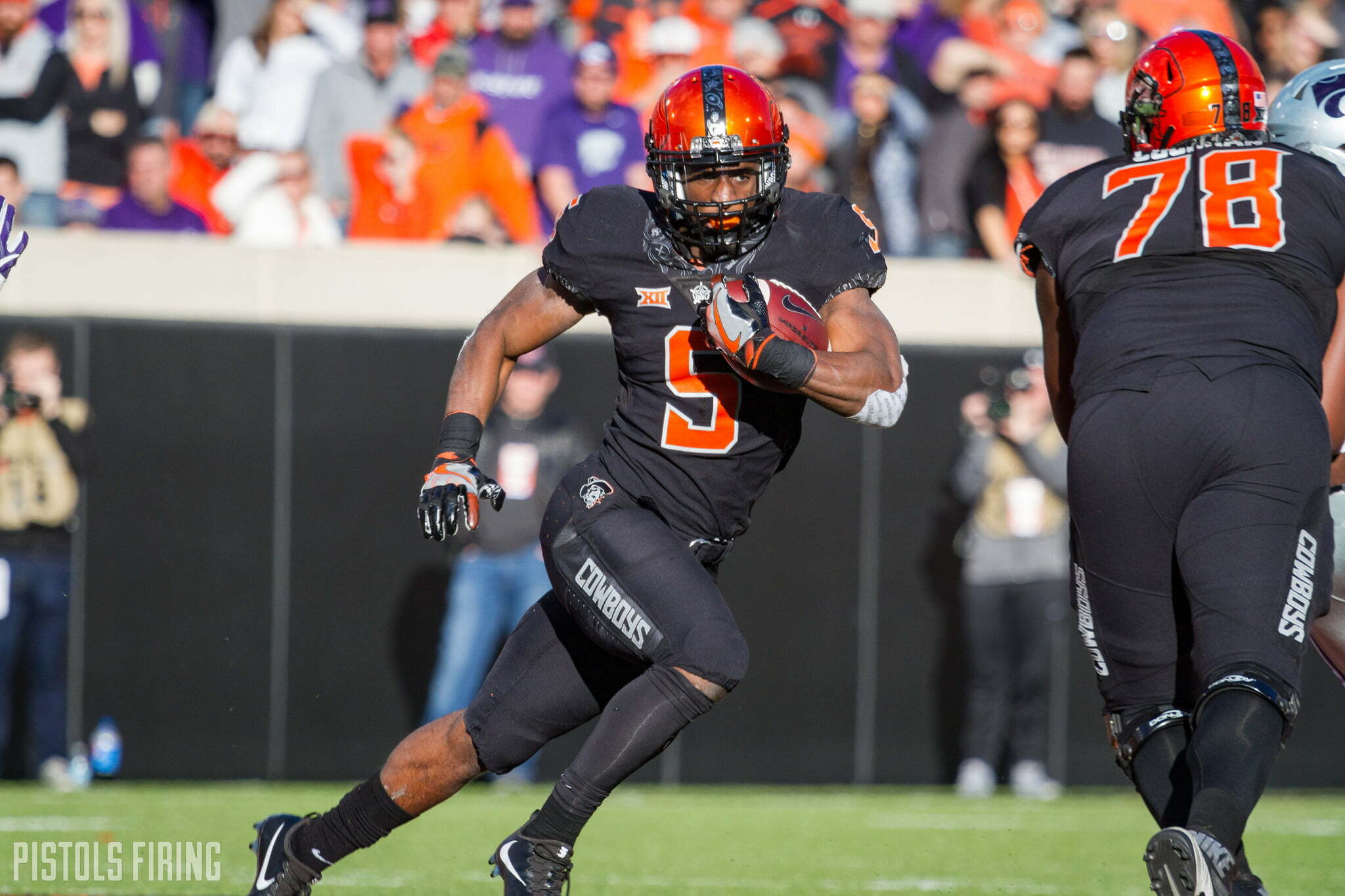
This is Part 2 of a six-part series on Oklahoma State recruiting that explores the relationships, the connections and the gold mines Mike Gundy has gone to over and over again in his time in Stillwater, USA.
Part 1 — The Road Map
Bobby Reid was one phone call away from going to Ohio State, which means Oklahoma State football as Cowboy fans know it was one dial away from potentially changing forever.
Joe DeForest was the Pokes’ lead recruiter in the greater Houston area, including North Shore High School, only a few minutes from the Gulf of Mexico. Reid was a five-star dual threat quarterback for the Mustangs, and DeForest was in on him from the beginning. Former Buckeye coach Jim Tressel and assistant Bill Conley were, too.
Both schools allowed Reid to graduate high school in December and enroll early, which was his priority, but former coach Les Miles’ team presented a quicker route to the field after Josh Fields left for baseball, and Stillwater was much closer to his beloved North Shore.
If the Cowboys got Reid, the No. 36 prospect in America, he would be the biggest recruit in school history, and as Mike Gundy’s recruiting picture stands in 2017, he retains that honor.
Reid had so many schools wanting to talk to him, his parents had to get a second landline installed in the house. He kept a calendar, down to the minute, of which recruiters could call at which times and for how long. It was his unique approach to recruiting: If anyone is late by even a minute or if he felt like they were just being “gorillas” in their aggressive calling, he crossed them off the list.
“I’m not gonna let this recruiting process consume me,” Reid said.
And because everyone knew Reid, if a relationship was squandered, everyone in town knew how those particular schools were going to treat future recruits from North Shore. That led to a sort of monopoly between the high school and OSU for a time.
DeForest was never late, Reid said, and that showed a lot about his character as a recruiter. Almost all others were just calling and not listening, he said, not respecting his time and his schedule. To him, “if you can’t follow a simple request, I can already see what kind of relationship this is gonna be when I get on campus.”
He got home after school before fall camp his senior season, took a nap, woke up and made the call.
Had Reid chosen the Bucks, he would have played with Maurice Clarett, Malcolm Jenkins and Santonio Holmes, and he would have been the backup to 2006 Heisman winner Troy Smith. Instead, he chose Victor DeGrate, Donovan and D’Juan Woods.
And instead, future coach Mike Gundy went on the rant of a lifetime in defense of him in 2007.
Convictions as a recruit have changed since Reid’s playing days as the entire landscape of the business has industrialized and materialized, but above all, players who commit to the Cowboys seek and find one thing that was resonated in every interview for this series:
“Trust.”
A Changing Landscape
When Reid was on campus in Stillwater, the team had water balloon fights where the Sherman E. Smith Training Center stands today. A lot has changed.
Boone Pickens Stadium was Lewis Field. Eddie Sutton Court wasn’t named. Mike Holder was not athletic director. And the Student Union didn’t have a food court or a university store.
In the same way, the recruiting scene has change dramatically. Head coaches can only make one recruiting visit a year now, so the days of R.C. Slocum, Lou Holtz and Mack Brown hanging out on the sidelines at North Shore are as finished as their coaching careers. The NCAA has turned recruiting violations into sanctionable offenses.
And as former OSU quarterback J.W. Walsh said, social media has changed everything.
Walsh was on the golf course when his first scholarship offer came through. He has elated, of course, but he didn’t go to Twitter and explain how “#Blessed and thankful” he was to have received his first offer. He didn’t even post it to his Facebook wall.
Now recruits have professional-grade photo edits and novel-sized posts to announce their top 12 schools, visits, commitments, decommitments and even position changes.
As seemingly every Division I university has leveled the playing field with multi-million dollar facilities, weight rooms and locker rooms, the programs can tend to be at the mercy of the recruits. A shift in power from less than a decade before.
Now as a coach, Walsh said one of the biggest challenges is having to relate to all players of all backgrounds, and if he does that at Abilene Christian, Gundy and his staff deal with it more at OSU.
In the 2012 class, the Cowboys signed a Wes Lunt from Rochester, Illinois; Calvin Barnett from the open plains and two-lane highways at Navarro College in Corsicana, Texas; Chris Grisbhy out of the pine tree boonies at Blinn in Brenham, Texas; and Paul Lewis from North Shore where the pines are traded for palms.
The diversity was astounding in that class and remains that way in 2017. There are 100 different backgrounds in 100 different players and as many different interests that could potentially earn their commitment.
For Walsh, he first got hooked on OSU when Josh Stewart showed him highlights of Dez Bryant. Stewart wanted to be like Dez, and Walsh wanted to be like Zac Robinson, he said. And once Gundy and his staff started showing interest, the visit sold him.
“It’s just such a phenomenal place that once you go and see it and you meet the people in Stillwater, you meet the coaching staff and you just see the atmosphere, it’s one of those places that you can’t not fall in love with,” Walsh said.
But for Walsh’s best friend from high school and favorite receiver, sticking with J.W. was paramount. Josh Stewart was committed to Texas A&M as a cornerback before Dana Holgorsen and Doug Meacham finally gave him an offer as a receiver. He was one of the last offers of the 2011 class, but to him, it didn’t matter because it meant more time with Walsh.
In that case, the recruiters could have said anything, and Stewart was going. But for Chris Lacy, it was about play style.
Lacy came from DeSoto High School, one of OSU’s top feeder high schools in the nation. Before he committed in the 2014 class, three others had already done so under Gundy. That wasn’t too important. The air raid style of play was what drew him to Stillwater.
Although, having a background of OSU was important for A.J. Green, a cornerback from DeSoto who committed two years later. He and Lacy talked. Green liked what he heard, checked it out and loved it.
“I talked to Tatum (Bell), Chris, I talked to those guys a lot,” Green said. “I talked to (DeSoto) coach (Todd) Peterman, and he liked the coaching staff, so it was just a great opportunity.”
There are dozens of different ways to seal a deal as a recruiter, and many of them have nothing to do with what is said. Nonetheless, defensive coordinator Glenn Spencer said interests aside, recruiting takes work.
“There’s ways you can be lazy in recruiting,” Spencer said. “A lot of guys don’t work at it. And if you do it without cheating, you have to work really hard at it. You have to stay up late and write that extra letter at night. You have to extend that phone call and get to another layer of the kid, so it’s about keeping up a relationship with the young man.”
That doesn’t always work, he said. Sometimes a recruiter does everything right and the prospect still signs elsewhere. Spencer said that happens a lot, even at OSU.
“There are some things you can’t fight,” he said. “If you’re not willing to get in there and go to blows with someone and fight your tail off, you’re just giving in.
“I get my heart broken every year.”
Remixing the Process
Much of the same applies to junior colleges but on a smaller yet more pressing scale.
Most two-year signings are used as Band-Aids to cover a hole in the depth chart, and the coaches and players at Blinn College understand that.
The program that trained Cam Newton is not just outside College Station in the shadow of Texas A&M. It’s an hour and a half away at a second Blinn campus in a city where the most tourist-worthy item in the pamphlet is the Blue Bell Ice Cream factory.
When coach Kevin Mahon gets a fresh group of undercard players every year, he knows their priorities lie in cities hundreds, if not thousands, of miles away. So he embraces it at their first team meeting, he said.
“I go, ‘Raise your hand if Blinn College was the college you had in mind the beginning of your senior year,’” Mahon said. “Nobody’s gonna raise their hand. We’re a stepping stone. We’re a plan B, and you have to know that.”
OSU signed Tralund Webber out of Blinn in 2016. He was a stud at tiny Cameron Yoe High School, but mostly because of the competition, he was overlooked. He went to Blinn like former Sooner receiver and high school teammate Dede Westbrook did before him and got out.
He came and went like a phantom.
“He’s a really quiet kid,” Mahon said. “But he’s very serious. When he came in, he did everything we asked of him and then got himself on, very businesslike.”
Every player is different, he said. But Spencer believes JUCO players add something a little different because they have been through it and seen some things a traditional high school recruit won’t. And because of that, they understand the magnitude of their situation, Spencer said.
“They don’t care about the uniforms and all that,” he said. “They wanna know what’s gonna get them prepared to go to the NFL. They’re looking at the depth chart because they know they’ve got two years.”
What it Comes Down to
With Justice Hill, it was about the uniforms.
He grew up an OSU fan because of Zac Robinson and how well he wore the orange and black, so when Gundy offered him a scholarship before his senior year, he committed quickly and became the first prospect in the Cowboys’ 2016 class.
Hill said it was a “dream come true.”
His high school coach at Booker T. Washington, Marvin Dantzler, said Hill’s recruitment was one of the most interesting and quickest he has ever come across after spending time in Louisiana, Oklahoma and now Kentucky.
Their connection ran through all four years of Hill’s career at Booker T., so when he committed about a week after National Signing Day for the previous class, Dantzler was one of Hill’s first calls.
“I knew they was getting a superstar,” Dantzler said. “He was that way the whole time I’ve ever known him. He was somebody we wanted to build our program about to the younger kids.”
It started with jerseys, was emphasized with trust and sealed with a signature on Hill’s national letter of intent.
Every player is different. From Jeremy Broadway at Booker T. in 2005 to Enoch Smith Jr. at Butler Community College in 2017, each story holds channels of interest and layers of commitment. But again, all signatures begin and end with the only thing every person interviewed in this series mentioned.
“Trust.”

-
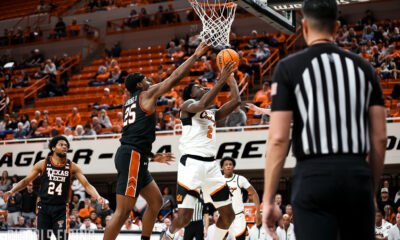
 Hoops4 days ago
Hoops4 days agoTexas Tech Transfer Robert Jennings Commits to Oklahoma State
-
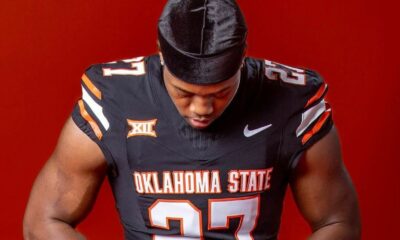
 Football3 days ago
Football3 days agoIndiana Running Back Transfer Trent Howland Commits to Oklahoma State
-
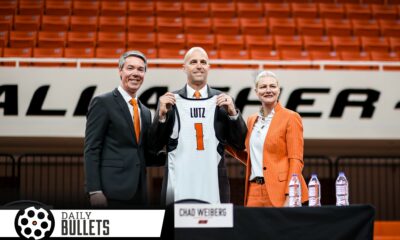
 Daily Bullets5 days ago
Daily Bullets5 days agoDaily Bullets (Apr. 25): Pokes Land a Guard, Cowboy Wins Share of Big 12 Title
-
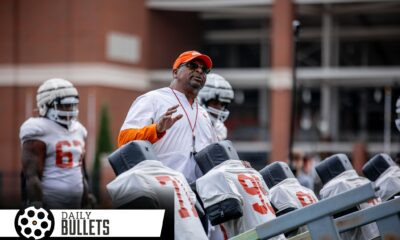
 Daily Bullets4 days ago
Daily Bullets4 days agoDaily Bullets (Apr. 26): Lutz Adds Another Player, Looking at OSU’s QB Commit






